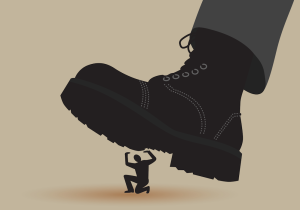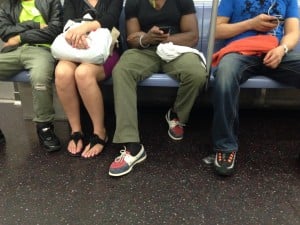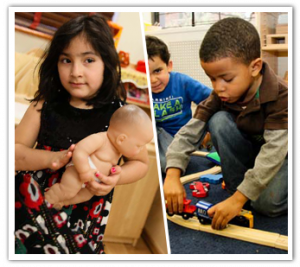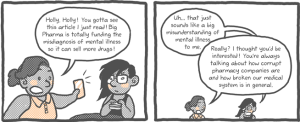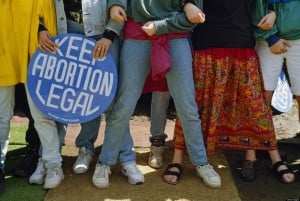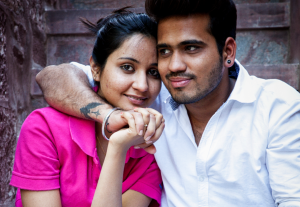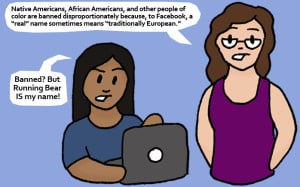
Sad person leaning on railing while surrounded by greenery.
As a Filipinx American woman who has experienced mental unwellness, I’ve become passionate about sharing my mental health story to encourage other Asian Americans and Pacific Islanders (AAPI) to embrace their own and seek help.
I recognize my privilege in being a second-generation, native English-speaking Filipinx American with means to address my mental health concerns — from finding solace in reading personal essays from other young AAPI women to utilizing talk therapy at my alma mater’s counseling center.
But over the years, I’ve noticed that not all support of the AAPI community is created equal. In fact, if you don’t identify as East Asian American or second generation-born and above, chances are you won’t see your narratives reflected in mainstream public health discourse.
Considering that Asian America is made up of an upward of 40 different ethnic groups who hail from different socioeconomic, educational, and immigrant backgrounds, I find this very disconcerting.
When I took my first Asian American Studies class in college, I quickly realized how oblivious I had been to the unique realities of the Southeast Asian American community.
Disparities in these communities — like high rates of poverty and mental health struggles that include PTSD, depression, and anxiety — are flying dangerously under the radar because they don’t fit into the popular model minority conception of Asian America.
For example, roughly 1 million individuals largely from Cambodia, Laos and Vietnam make up the largest refugee group in the United States.
Southeast Asian Americans are suffering, and few are noticing.
When our policymakers continue to lump vulnerable communities into the larger AAPI umbrella stereotype, which suggests they may not need deliberate public health support, it only masks the factors that contribute to their mental health struggles.
But, if so many people have been struggling for so long, why hasn’t anything been done to address it?
Here are 5 ways Southeast Asians are being erased from conversations on mental health:
1. We ignore the history and plight of Southeast Asian refugees in the U.S.
The Southeast Asian American community — with roots in Cambodia, Laos, Vietnam, Myanmar, and more — is more substantial than many realize.
About 1.2 million Southeast Asian refugees resettled in the United States between 1975 and the early 1990s. This was a direct result of the Vietnam War, the Secret War in Laos, and humanitarian crises that stemmed from these events, such as the Khmer Rouge.
Vietnamese American Melinda Lu’s refugee parents fled Vietnam soon after the war ended. Lu’s mother chased what she called “the most amazing opportunity in the world to get out of Vietnam,” when her mom’s cousin had a passageway to get to the U.S. because her dad was an American soldier. Lu’s mother posed as her cousin’s sister to ease the sponsorship process.
Lu’s father, whose own father died from the war and whose mother disowned him at the end of the war, attempted to get to the U.S. three times. The journey was arduous but the struggle continued even after resettling in the U.S. At one point, Lu’s father was forced to work two to three jobs to support his family.
According to Dr. Khanh Dinh, a psychology professor at the University of Massachusetts Lowell, the U.S. has struggled to assure the overall success of these refugee groups, even though they’re largely the reason for displacing them in the first place.
Successful refugee resettlement depends on the willingness and resourcefulness of host countries to respond to refugees’ unique needs, something that Dr. Dinh thinks the U.S. hasn’t adequately done for its refugee communities.
“It’s a prevalent assumption that once a group of refugees and immigrants have been here for a certain amount of time, they’re okay,” said Dr. Dinh.
Southeast Asian Americans show some of the highest rates of poverty, high school dropouts, incarceration and mental unwellness, according to Dr. Dinh, challenging the false notion that all refugee groups thrive and flourish after resettlement.
2. We perpetuate the model minority myth
The Asian American community is not a monolith, and perpetuating this idea harms groups, such as Southeast Asian Americans who face alarming health disparities.
‘Model minority’ was coined in the1960s by sociologist William Petersen in an article called “Success, Japanese-American Style,” to illustrate the false belief that Asian Americans are successful and obedient, mostly to antagonize Black and Brown folks.
The model minority is nothing more than a myth, but its ideas are still deep seeded in white supremacy today. And perpetuating this myth only further erases the experiences of Southeast Asian Americans by reinforcing the idea that all Asian Americans are well-off.
Vietnamese American software engineer Tim Nguyen, for example, said that his family struggled financially upon arriving in the U.S., despite what he said are popular notions that all Asian Americans are successful across the board.
Although his family eventually found economic success, the road wasn’t without adversity. Nguyen said his parents were constantly stressed out about his family’s finances, which inevitably rubbed off on him and the pressure he felt to succeed as a student.
According to the Southeast Asian Resource and Action Center, over 18 percent of Cambodian families and 27 percent of Hmong families live below the poverty line, compared with 11 percent of U.S. families overall.
Additionally, over 34 percent of Cambodian, Laotian and Hmong students drop out of high school, compared with 13 percent of U.S. student overall.
These numbers are erased when we buy into the single-story narrative of Asian Americans.
“When we’re talking about mental health, folks should make sure the way they talk about Asian Americans is not generalizing and universalizing a certain people’s experiences as representative of the whole,” said Jenn Fang, Asian American activist and founder of Reappropriate.
3. We don’t disaggregate enough data on the Asian American community
Data aggregation, which lumps together data for all Asian American populations, not specific subgroups, disregards important nuances, experiences, and narratives.
When we disaggregate data, breaking it down into smaller subgroups, it becomes immediately apparent that the refugee experience is strongly associated with mental health concerns such as PTSD, depression, and anxiety, Fang said.
Southeast Asian American refugee experiences and narratives are almost entirely lost in the AAPI mental health debate when data is aggregated because it’s so specific to Southeast Asian Americans.
“When you don’t disaggregate the data, that story is completely lost,” Fang said. “Too often do East Asian American narratives dominate what people think is representative of the Asian American experience.”
I was struck when I learned the suicide rate among Bhutanese Americans, who came to the U.S. as political refugees starting in 2008, is nearly twice that of the national average and is the highest of any refugee group in the U.S. But this narrative is simply lost within the AAPI umbrella since we’re looking at aggregated data.
Disaggregated data can also help organizations committed to AAPI well-being decipher where they need to funnel their resources, but this is rendered nearly impossible with limited government investment in disaggregation in the first place.
4. Southeast Asian American Studies programs and research are few and far between
Ethnic studies and Southeast Asian-specific research allow us to learn about the unique histories and experiences among communities of color.
I found it incredibly enriching to take Asian American Studies classes in college that often focused on the lived experiences of Southeast Asian Americans. But not all institutions agree, especially since many ethnic studies programs don’t receive adequate funding to even grow.
Dr. Dinh said there are unanswered questions that simply haven’t been covered in existing research on Southeast Asian American refugees.
There are very few studies that follow any refugee groups and outcomes on long-term adjustment in terms of mental health and well-being. Many gaps in this type of public health research is a grave disservice to these communities.
5. Mental health services for Southeast Asian folks are limited and often not culturally competent
Reflective of a concerning trend within the Asian American community as a whole, many Southeast Asian Americans do not seek out mental health services.
However, the experiences of Southeast Asian folks are often further compounded by factors such as trauma, language barriers, and socioeconomic status.
Mental health practitioner Dr. Song Lee said we need local organizations to do more outreach to Southeast Asian Americans since mental health services are “foreign to some.”
High school student Naomi Khin and her family fled their small village in Mandalay, Burma because of political turmoil and the constant attacks from terrorist groups on the countryside. Khin said her parents didn’t know “how to be free” when in the U.S. because being cautious about their every move was their norm.
According to Dr. Lee, culturally sensitive approaches and centers, multilingual speaking health care providers, translated pamphlets, and a respect for Southeast Asian culture and experiences are steps in establishing this necessary foundation of trust.
Melinda Lu said that her refugee parents taught her to not feel sorry for herself or complain about hardships because “someone had it way worse” than her, who she said she always thought of as her parents.
When Lu finally sought mental health treatment as a college student she was paired with an Asian American counselor. Still, she said that she still felt misunderstood because her third-generation counselor didn’t quite understand Lu’s experiences as a first-generation born child of refugees.
Experiences like these highlight the importance of expanding culturally competent services to be as inclusive and wide-ranging as possible.
“To be inclusive means to establish trust with the Southeast Asian community,” Dr. Lee said. “I genuinely believe each person is interested in bettering themselves, but if the trust is not there, they will not seek services.”
***
Efforts to make mental health sphere more inclusive of Southeast Asian Americans will require support on multiple fronts, but we have the power to change the conversation.
One crucial step in doing this is fighting to make comprehensive data disaggregation a reality at local and federal levels of policy. According to Fang, the fight for data disaggregation, although a perennial challenge, is among the foremost civil rights topics of our time.
Getting connected with the efforts of national Asian American groups like the Asian and Pacific Islander American Health Forum (APIAHF) in their fight for public health data disaggregation is crucial, as well as attending town halls, hosting data disaggregation workshops, or signing a petition.
“Be aware of this fight, be plugged into the community and where these fights are happening, and make sure to stay involved when new action comes up,” said Fang.
Asian Americans are currently the fastest growing group in the United States, and there’s immense political power to tap into, especially in cities with prominent refugees or immigrant populations where Southeast Asian Americans will begin to enter politics and making changes from within, said Dinh.
The Southeast Asian American community is resilient, but it is crucial that others act in solidarity to empower us as we tell our mental health stories or demand data disaggregation. The fight will continue until Southeast Asian American folks are no longer invisible.
“We keep advocating until they can’t ignore us,” said Dr. Dinh.
[do_widget id=’text-101′]
Alicia Soller is a first generation-born Filipinx American digital storyteller committed to uplifting the narratives of communities of color. She is a graduate of the University of Florida, where she received her B.S. in Journalism and was first inspired to incorporate advocacy and activism into her work as a journalist. She currently does freelance writing, marketing, and design work with nonprofit organizations.
Search our 3000+ articles!
Read our articles about:
Our online racial justice training
Used by hundreds of universities, non-profits, and businesses.
Click to learn more






